Looking to buy the most robust drone possible, then you’ll love this guide comparing drone models based on safety features.
In order to simplify flying a drone, pilots have to create methodologies that form into habits. Over time these habits form routines and systematically reduce the chances of having a crash. While many drones offer a significant amount of safety features, pilots still need to be trained on what to look for. We’ve broken down the safety features that remain overlooked. This guide also illustrates an ideology of Drone are so nuanced, and it is almost impossible for pilots to discern what information is valuable. Let’s clear the air.
This guide will go over safety features for drones, but also showcase must-have knowledge to avoid crashes. This guide will also compare drone models based on safety features and capacity to have a truly safe flight. Don’t be fooled by marketing, thanks to our large community of drone pilots and experienced instructors… we can provide real world data and information.
When it comes to discerning how safe a drone truly is, lets use the following system to better understand.
When it comes to determining safety features on drones, we want to know:
- Can the pilot view battery voltage by cell to always ensure a safe flight?
- (remember fly home at 3.6 volts when loaded: if you’re not familiar with this rule watch our Don’t Crash, Operations or Flight Mastery courses.)
- Can the pilot take over control of the drone, turning off all sensors to have ultimate control, in case of a flyaway or emergency?
- Sensors are great, but over time they cause more problems when they solve. They also teach the pilot to trust the sensors, and when an emergency happens… the sensors cannot respond fast enough and often fail the pilot.
- Flight modes like attitude mode also help pilots avoid extremely windy conditions.
- When flying in attitude mode the drone will just float in the wind, instead of fighting the wind and potentially crashing.
- Can pilots turn off obstacle avoidance, positioning sensors and landing protection features?
- What is the maximum windage the drone is rated for?
- How many directions does obstacle avoidance work?
- How fast can the drone travel and the obstacle avoidance still work?
- Do add on accessories, like parachutes, inhibit our aircraft from operating normally?
Let’s showcase some knowledge that experienced pilots have, and might help you as well.
Key Safety “Features” Pilots should know:
- Battery Voltage over percentage indicator
- Attitude mode to stop flyaways
- Obstacle avoidance: when it works and when it will sink you.
- Wind: only hurts drones flying in GPS mode.
- Parachutes
Battery Indicator
As drones have evolved over time, they showcase more “safety” features. Are these features actually creating a safer environment for flight? We would argue it does not. The perfect example can be found with newer Mavic Air drones compared to Mavic Pro drones. First and foremost… Every pilot who has been flying for more than 2 years knows… you cannot trust drone batteries. Unless you take the ultimate level of care for them. Even batteries that have been well maintained cause issues for pilots over time. Experienced pilots have learned not to trust battery indicators, or battery percentage. Yet on the newer aircraft, pilots cannot even view battery voltage. The Mavic Air and Air 2 and Air 2s are setting pilots up to fail… simply because they will be unable to truly discern available battery. Will they have a safe flight or drop out of the sky? Your guess is as good as mine! They would also face a battery error in flight, without a means of determining if it is about to happen. (Cell voltage deviation)
Think of a helicopter or plane, do they use algorithms to determine available flight time… or do they have a fuel tank gauge showing available fuel? Just like our fuel tank gauge, drones should have a “fuel gauge as well,” and most prosumer drones and enterprise drones offer this fuel gauge.
Whether pilots are flying in hot temperatures or cold temperatures, high altitude or low altitude, the ultimate indicator of flight endurance is battery voltage.
Attitude mode or Sensor Denied Flight mode.
Most new drones, other than enterprise drones, do not have an attitude mode. Why is that? Simply put, follow the money… Do drone companies benefit from providing true safety features? No, they won’t sell as many drones. Yet look at the enterprise drone offerings from companies like DJI, they still offer attitude mode…
Why is this feature the ultimate safety feature? Because the drone pilot can turn off all sensors and take over control of the aircraft and bring it home. Often times our GPS can fail and cause a fly away. Obstacle avoidance can fail and cause a flyaway. Often times we need a sensor denied flight mode to save the day. Bad data causes crashes all the time. A true responsible and trained pilot can typically avoid most emergencies by taking over full control of the aircraft.
When a drone doesn’t offer this flight mode, it is inherently less safe.
Obstacle Avoidance: When it works and when it doesn’t
Often times new and experienced pilots rely on obstacle avoidance. Many drone companies even say their obstacle avoidance is the ultimate safety feature… Hard to believe if you ask me. Obstacle avoidance follows the same rules of photogrammetry, to an extent. Ie. reflective materials, low light and highly contrasting light makes obstacle avoidance obsolete.
Yet a better question might be, how fast can the aircraft fly and the obstacle avoidance still work? While drones have been getting better at flying with obstacle avoidance, most are still limited. Most drones can only fly to 15-20mph (at best) and still have obstacle avoidance work. What is the limitation? The drones processing power. The drone is limited in how fast obstacle avoidance works, based on the onboard processing power. Until drones offer more robust computing capability, obstacle avoidance will be limited.
Wind:
While wind can inhibit many pilots from taking flight. Typically more experienced pilots are able to navigate these rough conditions. Again, having an attitude mode makes flying in the wind much more manageable. As the drone floats in attitude mode, the drone isn’t fighting the wind as much. IN GPS or position fly modes, the drone is constantly fighting the wind.. making footage unusable. While particular drones may be able to fly in certain wind conditions, the ultimate determinant is pilot capability.
Parachutes:
One of the biggest farces in the drone industry, that parachutes make your drone safer. In most cases, parachutes do not make your drone any safer. In fact, we just saw a drone safety guide promoting the Parazero parachute. Lets explain why this doesn’t work. The parazero parachute is often fixed on top of drones, like the phantom and other aircraft. Yet the position of the parachute is quintessential to its success.
The Parazero parachute, situated on top of the GPS compass, actually makes the aircraft MORE PRONE TO CRASHING. We have witnessed 2 flyaways during trainings. In both instances, the pilot had affixed a parachute on top of the drone. When you block the GPS compass, it is easy to understand why the GPS compass would fail and cause a flyaway. Putting anything over this sensor is a horrible idea. It makes the aircraft less safe, not safer…
When considering a parachute for operations, consider a parachute that is not affixed to the top of the drone. Consider a parachute that is ballistically triggered and not spring loaded. In most cases, a parachute is not necessary and actually inhibits proper function and flight of a given drone. Stear clear and learn how to fly and limit operating hazards that would cause the need for a parachute.
Safety Rating by Drone:
- Phantom 4 Pro or V2
- DJI Mavic 2 Pro or Zoom
- DJI Mavic Air 2 or 2s
- Skydio 2
- Autel Evo 2
- Mavic Mini 2
- DJI FPV
Let’s break down the safety rating of these particular aircraft to better understand which drones are truly the Safest.
Overall, the Phantom 4 Pro (not plus) is one of the best overall drones ever built. With a robust feature set, intelligent flight modes and multiple flight modes, this aircraft serves creative and technical professionals. This drone even shoots 4k 60fps without cropping into the frame. With a variety of accessories available, this is the number 1 commercially viable drone. AS the drone offers incredible video, killer photos and the ability to be controlled with a plethora of third party applications for technical missions.
- Attitude Mode Included
- Obstacle Avoidance
- Front, Back, Downward and each side (not above)
- Battery Life: Average of 25 minutes (at 5,000 feet MSL)
- Max Wind Speed Resistance: 35mph
- Battery Voltage: Displayed on home screen
- Hackable: Yes, remove NFZ’s | Change FCC Mode | unlock additional features
Overall safety rating (9/10)
By far the most capable and portable video drone ever made. The Mavic 2 Pro’s Hasselblad sensor offers unparalleled color in photos and videos. Frankly speaking, this is our favorite creative drone due to the sensor, hyper-lapse mode, ability to take insanely beautiful panos and ability to hack the drone acquire attitude mode. The zoom model offers insane video motion flexibility, offering pilots a new level of creativity when capturing aerials.
- Attitude Mode Not Included | Attitude mode is Hackable.
- Obstacle Avoidance
- Front, Back, Downward and each side (not above)
- Battery Life: Average of 20 minutes (at 5,000 feet MSL)
- Max Wind Speed Resistance: 25 mph
- Battery Voltage: Displayed on home screen
- Hackable: Yes, remove NFZ’s | Change FCC Mode | unlock additional features
Overall safety rating (8/10)
DJI’s newest mavic offering has excited new pilots, yet the lack of camera controls and safety features severely limit the drones capabilities. These drones are controlled through DJI’s newest application “Fly.” This application offers more intelligent flight features, but removes absolutely critical safety features. Many experienced pilots have chosen to steer clear of this drone, mainly due to the lack of adjustable aperture from the sensors. A Mavic 2 Pro offers the same flight features, but with more pilot control.
- Attitude Mode Not Included | Not hackable
- Obstacle Avoidance
- Front, Back, Downward and above (2s) (2 does not have upward sensors)
- Battery Life: Average of 24 minutes (at 5,000 feet MSL)
- Max Wind Speed Resistance: 25 mph
- Battery Voltage: Not Available
- Not Hackable
Overall safety rating (6/10)
While Skydio’s newest offering promotes the most advanced obstacle avoidance, the flight characteristics are highly limited. The sensors also cannot be overridden, so if the drone gets stuck behind a tree, it may take some time to fly the drone out of danger. While this drone is pushing the envelope of capabilities, it is not any safer than other drones. The obstacle avoidance does work at higher speeds, but the transmission distance is extremely limited. In addition, pilots are forced to buy additional parts that are normally included with other drone packages. Example: you have to pay extra for the remote. Drone U has written extensive articles on the fear of flying this drone in compliance with FAA regulations. You can read more here.
- Attitude Mode Not Included | No sensor denied flight mode
- Obstacle Avoidance
- Front, Back, Downward and each side and above
- Battery Life: Average of 18 minutes (at 5,000 feet MSL)
- Max Wind Speed Resistance: 25 mph
- Battery Voltage: Not available: also battery percentage is calculated differently from other drones.
- Not Hackable
Overall safety rating (4/10)
DJI’s largest competitor offers compelling features and comparable portability with the Autel Evo 2. The highly portable drone offers a simple and easy to use interface. The drone offers significant control and speed. Paired with a large megapixel camera, this is the only drone that shoots 8k video without extra purchases. Autel’s drones offer similar obstacle avoidance and a very friendly flying experience. Many pilots choose to fly with Autel due to a comparable price, features and lack of geo-fencing that is found with all DJI aircraft. It is easy to understand why Autel has been gaining so much market share throughout the drone industry.
- Attitude Mode Not Included | only used when GPS goes out.
- Obstacle Avoidance
- Front, Back, Downward and each side
- Battery Life: Average of 40 minutes (at 5,000 feet MSL)
- Max Wind Speed Resistance: 30 mph
- Battery Voltage: Available but not on home screen
- Hackable: Not needed, as there is no geo-fencing to begin with.
Overall safety rating (7/10)
The Mavic Mini 2 offers the most robust flight experience for the cheapest price. The transmission distance is incredible with this little aircraft. With limited camera features, don’t expect a lot of camera control. Many pilots choose to fly the Mini 2 because of its sub-compact size and microdrone class of weight (less than 250 grams). Due to the extreme portability, pilots often choose this drone to throw in their backpack and augment their ground camera work. The mini offers a DJI like flight experience in a micro drone. The aircraft will soon be able to fly over people with the rollout of the FAA’s new rules. While the Mini SE just released for a cheaper price point, pilots might want to compare the features between the two to better understand what is right for them. The customization is extremely limited with this aircraft, but could become a powerhouse with a few hacks.
- Attitude Mode Not Included | only used when GPS goes out (put a sticker over the lower sensors)
- Obstacle Avoidance
- None
- Battery Life: Average of 18 minutes (at 5,000 feet MSL)
- Max Wind Speed Resistance: 15 mph
- Battery Voltage: Available but not on home screen
- Hackable: remove precision landing, geo zones and other features.
Overall safety rating (6/10)
DJI’s latest release of drones has ignited the creativity of numerous pilots. Whether new or old pilots, the DJI fpv offers a great means of transitioning from traditional drone flying to FPV. With numerous flight modes and configurations, the drone suits novice pilots and pro FPV’ers. This drone allows pilots to fly in full manual mode or traditional GPS and sport mode configurations. The camera isn’t suited for pretty pictures or most commercial drone work. The gimbal rolls with the aircraft to give the video a more “plane” view and feel. Creatives will love this drone, but requires more experienced users to get the most out of the drone.
- Attitude Mode Not Included | Full Manual Mode instead. (no altitude hold)
- Obstacle Avoidance
- Forward Facing Obstacle Avoidance
- Battery Life: Average of 18 minutes (at 5,000 feet MSL)
- Max Wind Speed Resistance: 25 mph
- Battery Voltage: Not available
- Not hackable, but mostly customizable.
Overall safety rating (6/10)


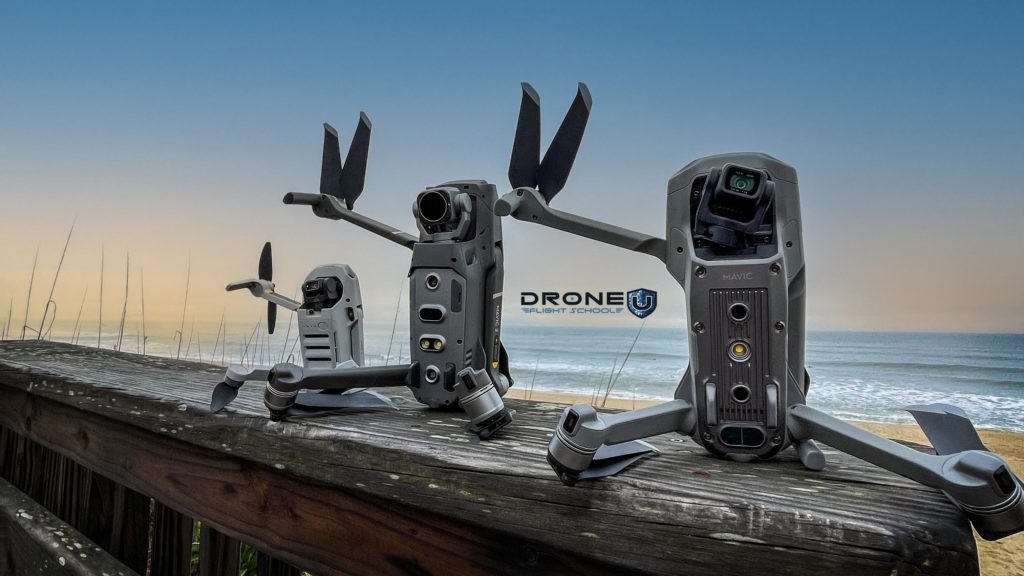

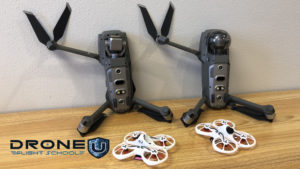

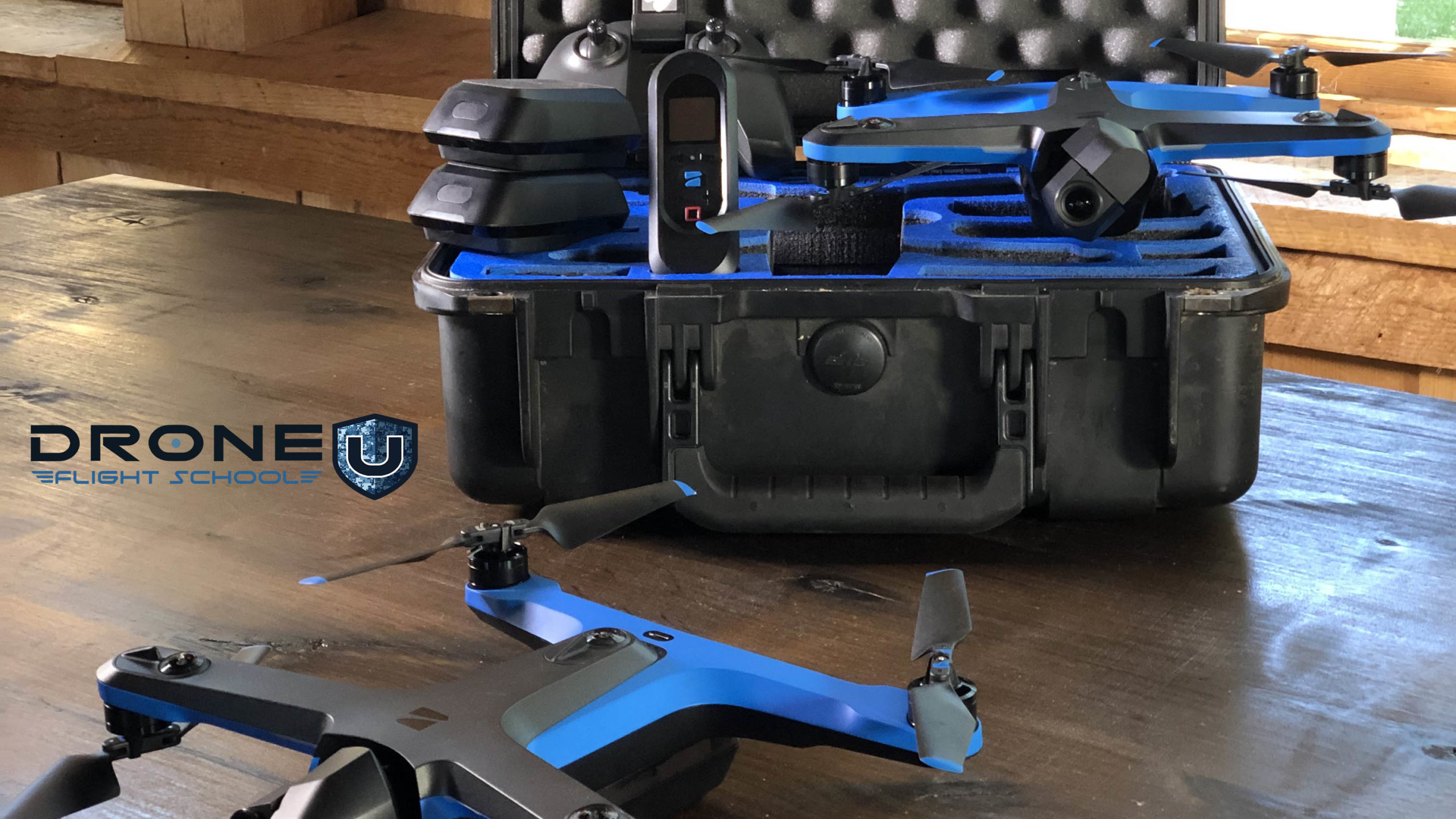
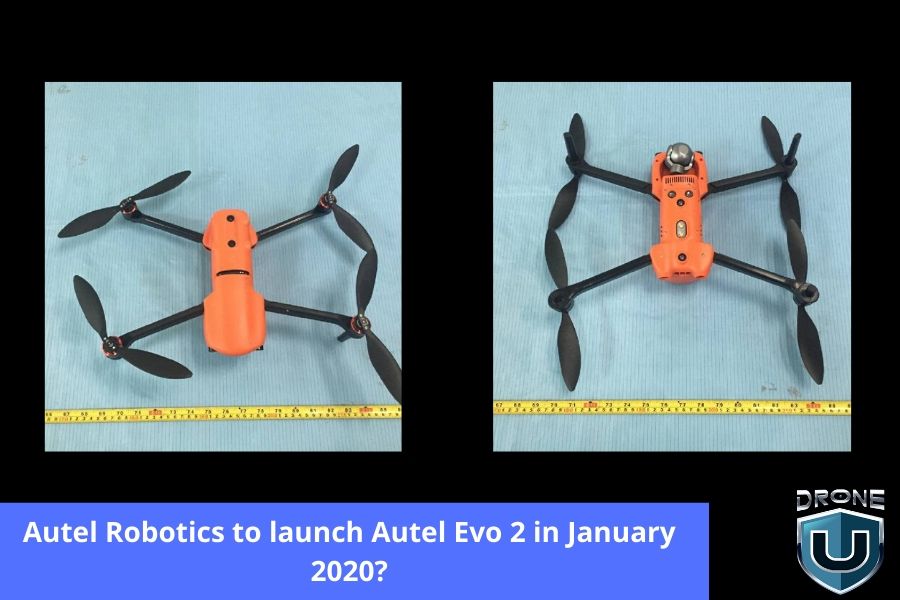
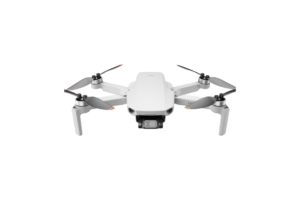
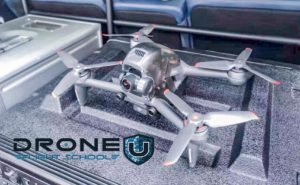



Add Your Comment